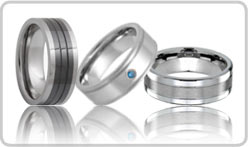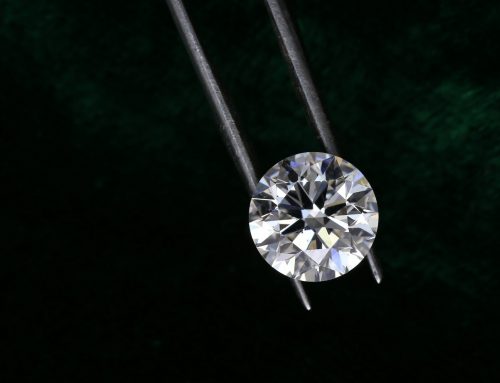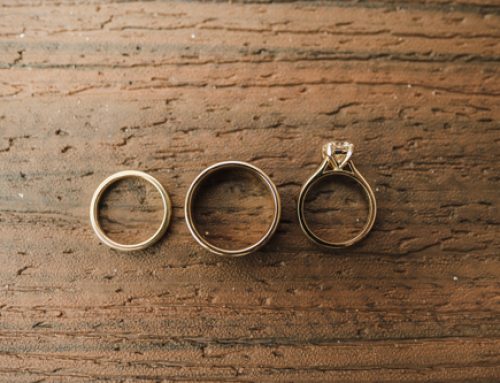So you bought a ring and love the way it looks and feels. You take it off only to discover it has left a discoloration on your finger. No, not a tan line or a white mark left behind – that is caused by moisture trapped behind your ring and finger, similar to the reaction your skin can have to a band-aid. Instead, your finger is green or black. If you take off the ring to discover this discoloration in front of others, your face may also turn red, from the embarrassment.

Most people tend to believe that the green or black discoloration left behind by jewelry is a sign that the ring or other piece of jewelry they were so proud of just moments ago, is low quality or may contain materials that may be toxic. Actually, the discoloration is your finger’s chemical reaction to the non-precious metal, such as nickel or copper, used in your ring’s alloy mixture.
The rings that tend to discolor fingers the most are 14k white gold rings. The reason this happens is mostly because eventually the rhodium plating wears off and you can begin to visibly see the yellow color of the gold underneath. Rhodium is metal, from the platinum group of metals that is used to plate white gold rings so they appear white. Rhodium does not react with other elements and so once the rhodium wears away, the other metals that are alloyed with the gold are now exposed to vast quantity of chemicals we come in contact with on a daily basis. While those chemicals tend to not be harmful to us, they may not react well with the metals used to alloy the gold, which results in the lovely green or black ring discoloration left behind on your finger.
One of the most common chemicals we come into contact with on a daily basis is chlorine. Whether it is in pools, hot tubs, or top water, chlorine is probably the most harmful chemical to jewelry. Chlorine can eat away at gold and silver. If you’re going to be swimming or in a hot tub, it’s recommended that you remove your tungsten wedding bands beforehand.
Further, you may come in contact with chemicals from cosmetics or lotions on a daily basis, because many of those cosmetics or lotions contain minerals that are extremely hard and can attack jewelry at a microscopic level. This is called “metallic abrasion”.
When metallic abrasion occurs, tiny metallic particles are worn off onto your skin. Then, those tiny particles react with every day chemicals we come into contact with, which can form a black dust or film on your finger. This is the discoloration you see. To avoid this, you can remove your jewelry before applying lotions or makeup.
While some chemicals we can avoid, others we cannot. One of the main sources of those chemicals is from the perspiration of our own skin. The alloy metals found in white gold and sterling silver can easily react with your skin’s sweat and acids. Alloys, such as nickel and copper, can cause allergic reactions, which can discolor your skin.
Different types of metals react differently to the various things we come in contact with. Whatever concerns may have, you can discuss them with your jeweler about what metal type could best suit your every day needs. If no metal is suitable for you, you can always look into non-metal jewelry.





Leave A Comment